Understanding the wellness gap
- 73% believe brands need to embrace wellness as part of their core mission.
- 41% think wellness claims from brands are believable.
- 66% say that brands in the future will need to have a wellness component in order to survive.
- 80% of consumers want to improve their wellness but half of them can’t find the options they want.
The study cited that brands in every sector failed to deliver on the value consumers place on wellness benefits. This gap is ripe with opportunities for brands to accelerate growth and innovation by becoming customer partners in navigating their wellness journey.

The availability gap
The product or service that consumers expect does not exist.
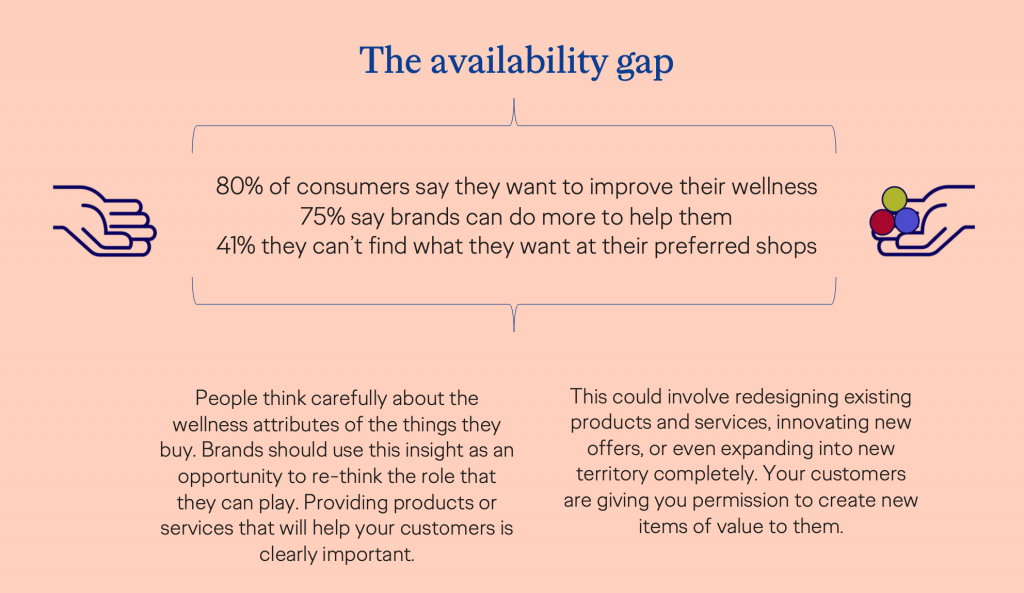
The authenticity gap
Wellness claims need to be understandable and believable.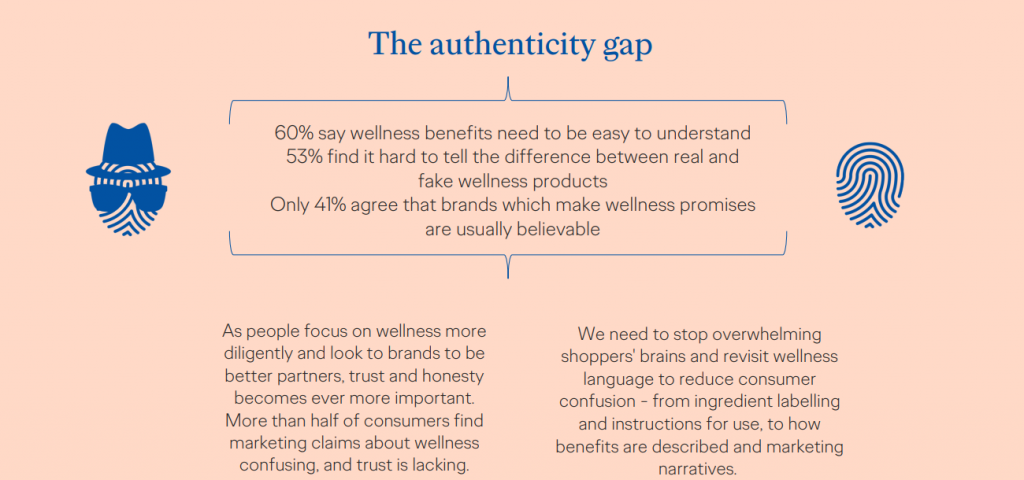

The value gap
Wellness needs to balance being good value for money, good for the consumer, and good for the environment.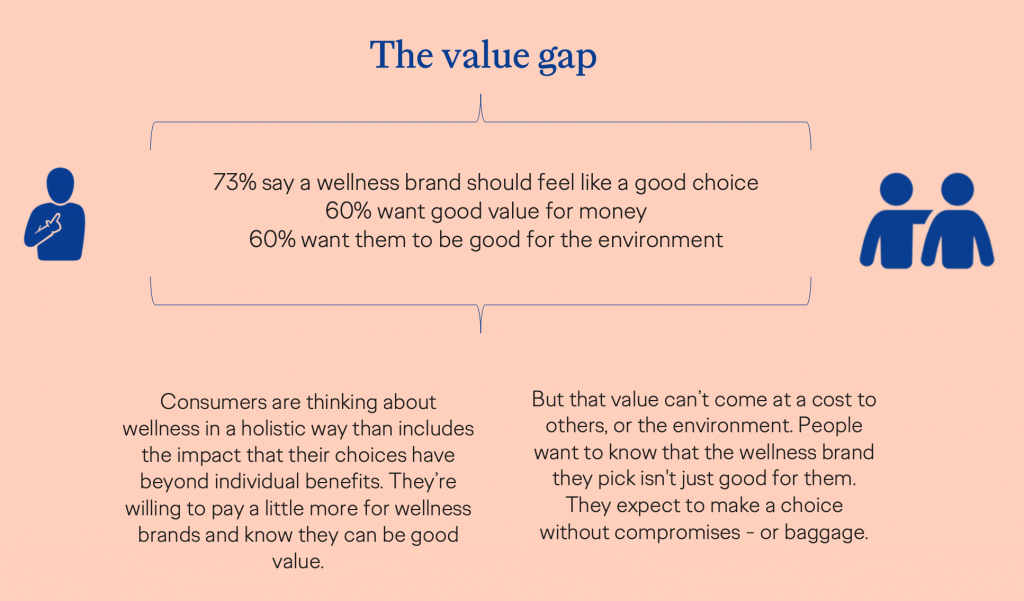
Characteristics of wellness
The study found that consumers’ descriptions of wellness brands can be grouped into four specific sets of characteristics:
Physical wellness benefits
- 86% of consumers say “helping me stay in good health” is the most important attribute of a wellness brand.
- 75% say they “enable me to stay active.”
- 75% say making healthy meals and 67% say getting better sleep are their top ways to improve how they feel.
- People value brands that help them be more aware of their body’s needs, build physical resilience and strength, and help them operate at their best.
Mental wellness benefits
- 80% of consumers say that putting them in a positive frame of mind is an important attribute of a wellness brand.
- 74% say that wellness brands should help promote a sense of harmony and balance.
- 71% say wellness brands should help lower levels of stress and anxiety.
- 62% say wellness brands should help them feel empowered.
- Knowing that one source of stress is worrying about whether wellness claims can be trusted, brands should consider the wellness signals they employ and how that can reassure and build their customers’ confidence.
Socially connected benefits
- Helping consumers feel more connected to others and part of a ‘tribe’ is an emerging characteristic of wellness brands.
- 56% of consumers think wellness brands should “help me nurture or care for others.”
- 53% say wellness brands should help people feel connected.
- 53% say that wellness brands can help them feel they’re keeping up with modern times.
Purposeful impacts
- Being a wellness brand means being a brand for people, community and planet. Consumers consider purpose and impact to be a characteristic of wellness brands.
- 71% of consumers say that wellness brands should help them make a positive difference in some way.
- 72% say they should help consumers feel they’ve made a good choice.
- 62% say wellness brands can give them a sense of purpose.
- 60% say that wellness brands should be good for the environment.
Wellness drives growth
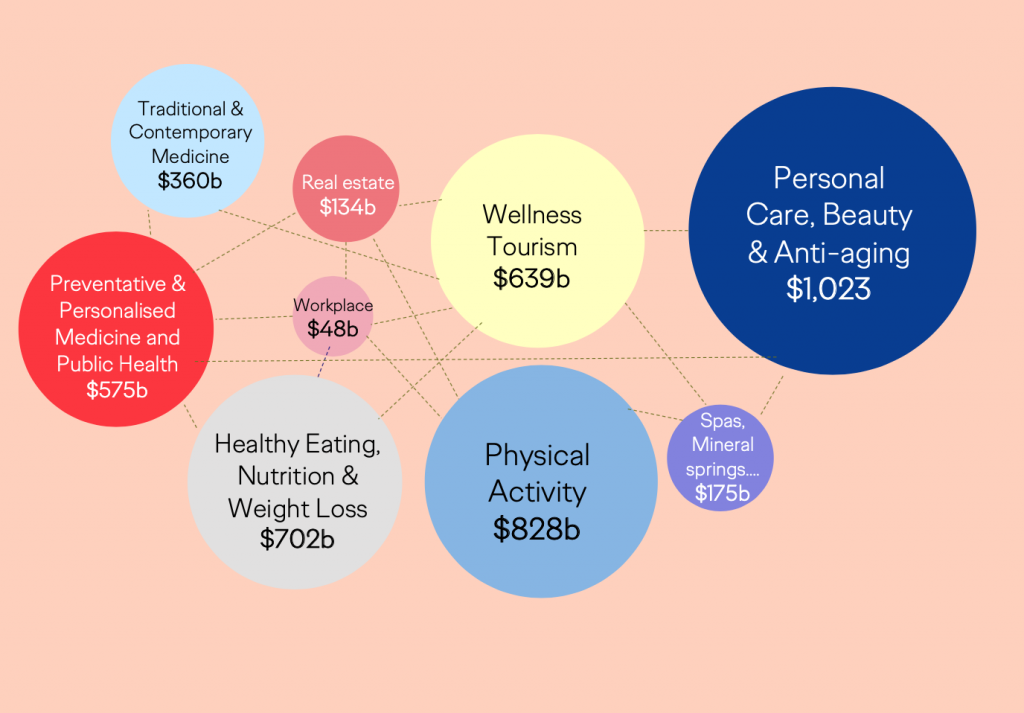
- The Global Wellness Institute identified a $4.5 trillion wellness market in 2018.
- Purpose-led brands grow three times faster.
- Consumers measure a brand’s purpose in part through its wellness impacts.
- 64% of consumers say they would always prefer to buy a brand’s wellness product or service.
- 53% find it hard to tell the difference between ‘real’ and ‘fake’ wellness products.
- 59% say that wellness brands are worth paying more for and the same number have preferred wellness brands when shopping.
The impact of Covid-19
- Wellness comes sharply into focus at a time when we depend on both physical wellness and mental resilience to help prevent and/or overcome the impacts of Covid-19.
- 76% of respondents globally agree that Covid-19 has impacted the importance they place on wellness.
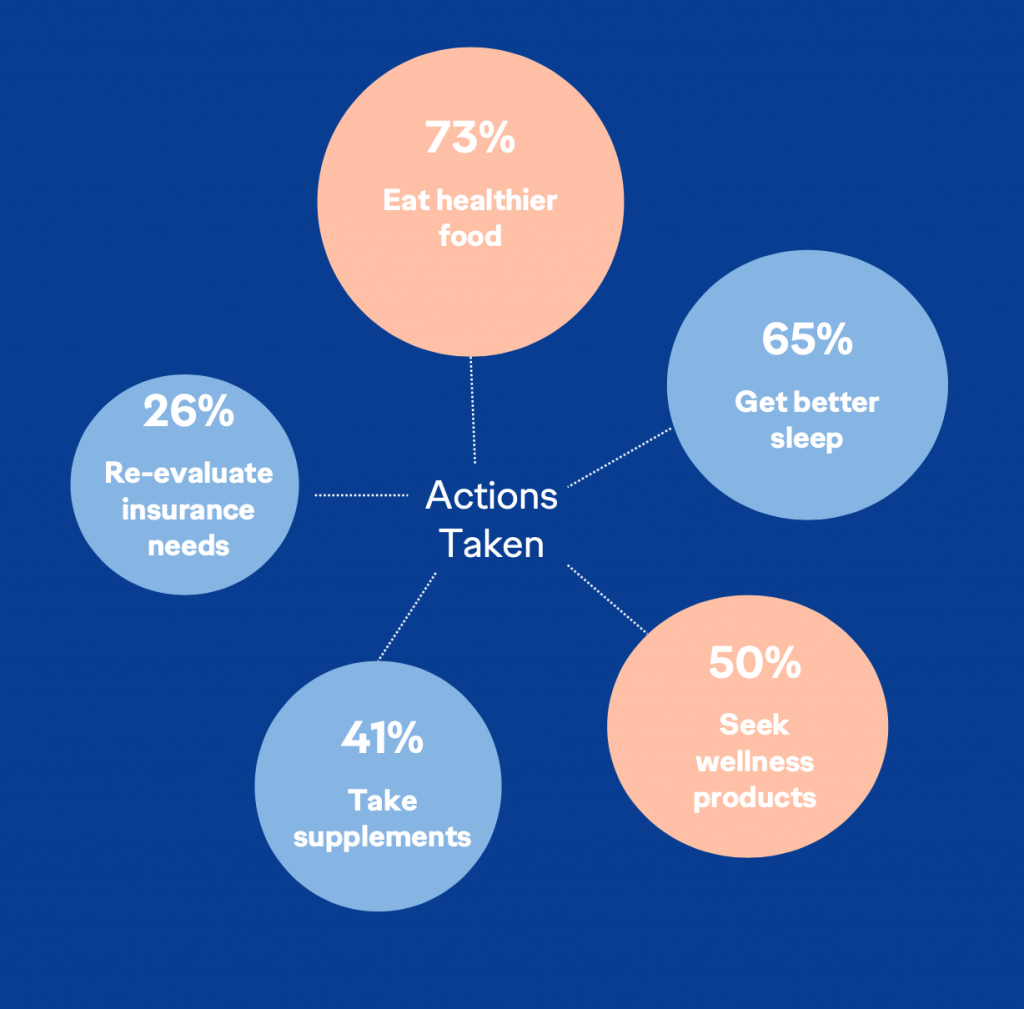
“Wellness has created new conversations, new expectations, new purposes – both for companies and individuals. Wellness has inspired new businesses, new brands, new products, new services, new experiences. Wellness has seen companies pivot their strategy, business and portfolio. Wellness has started to revolutionize entire industries, starting with the food and beverage industry,” concluded Benoit de Fleurian, Ogilvy’s Global Planning Lead for Health & Wellness, in the report.




